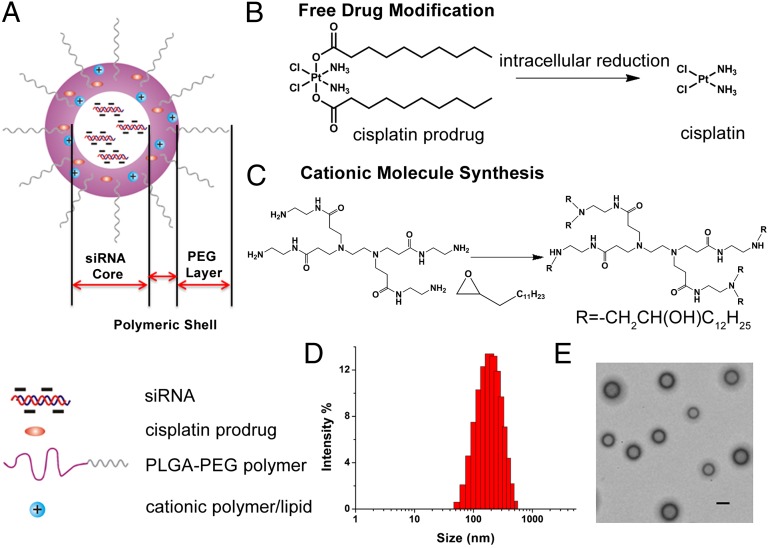Fig. 1.
(A) Chemical structure of PLGA-PEG/G0-C14 NPs. The particle consists of three components: (i) an outer PEG surface, (ii) a PLGA/G0-C14 layer that plays two roles: (a) acting as a polymer matrix loaded with nonpolar drugs and (b) protecting and promoting siRNA molecule retention inside the NP core and controlling drug release, and (iii) an aqueous inner core containing siRNA. (B) Chemical structure of the hydrophobic platinum(IV) compound 1 and the chemistry by which the active drug cisplatin is released after reduction in the cell. (C) Synthesis of G0-C14 through ring opening of 1,2-epoxytetradecane by ethylenediamine core-PAMAM generation 0 dendrimer. (D) Size distribution of the NPs containing both compound 1 and siRNA determined by dynamic light scattering. (E) Representative transmission EM image of the NPs. (Scale bar, 200 nm.)

